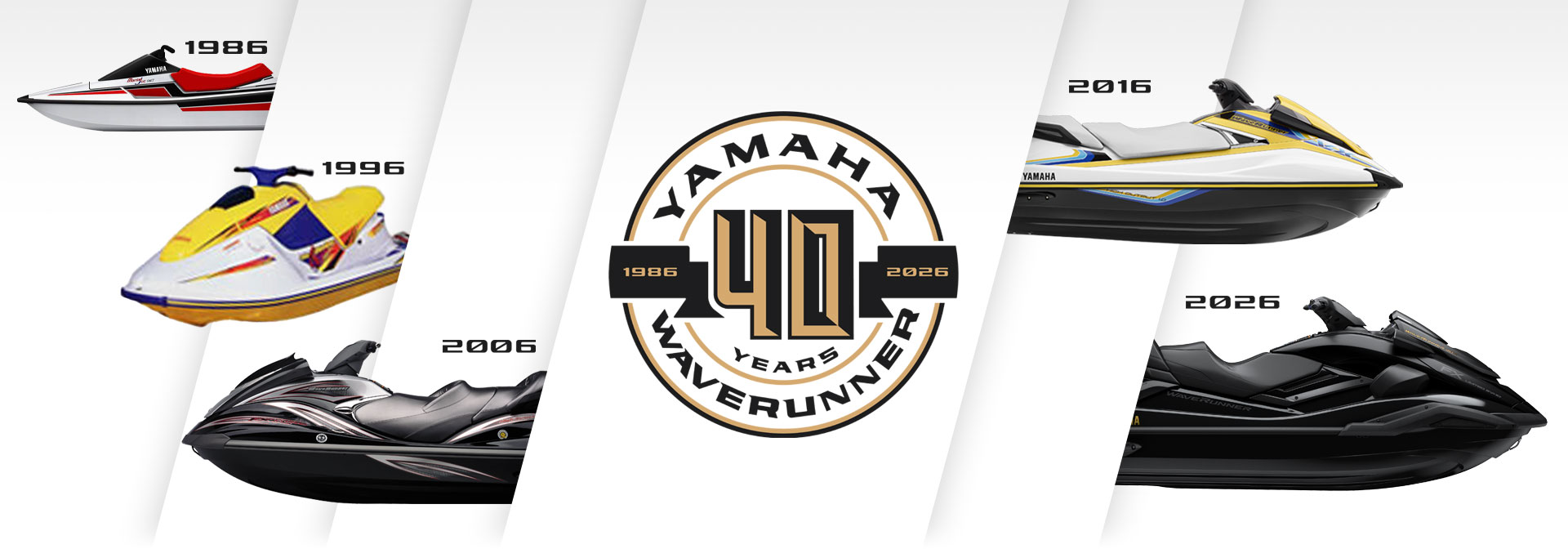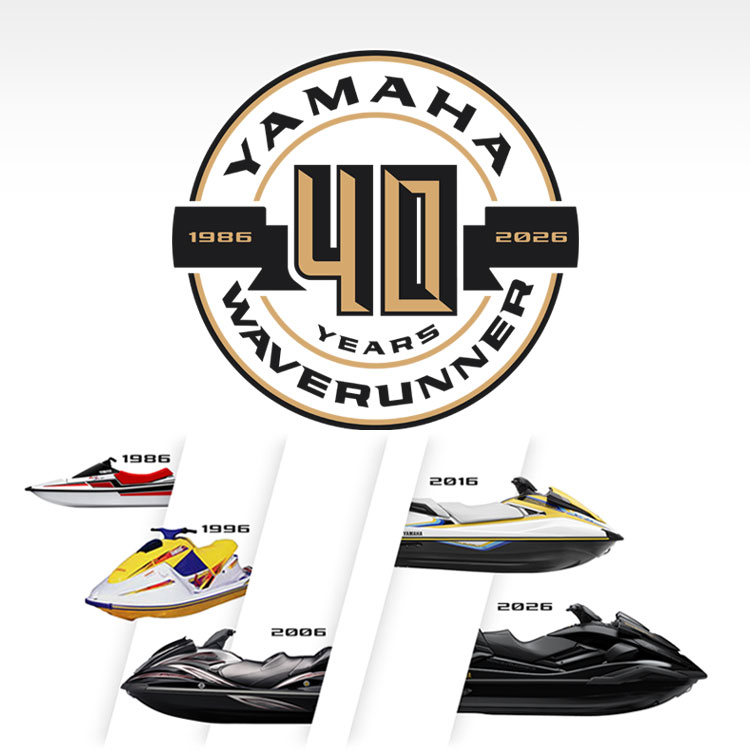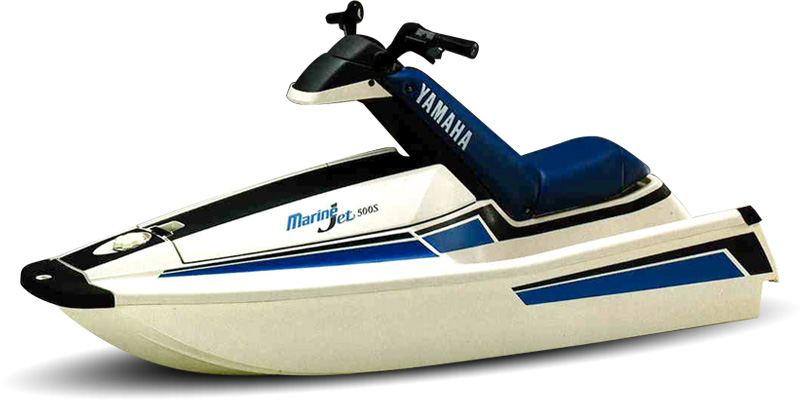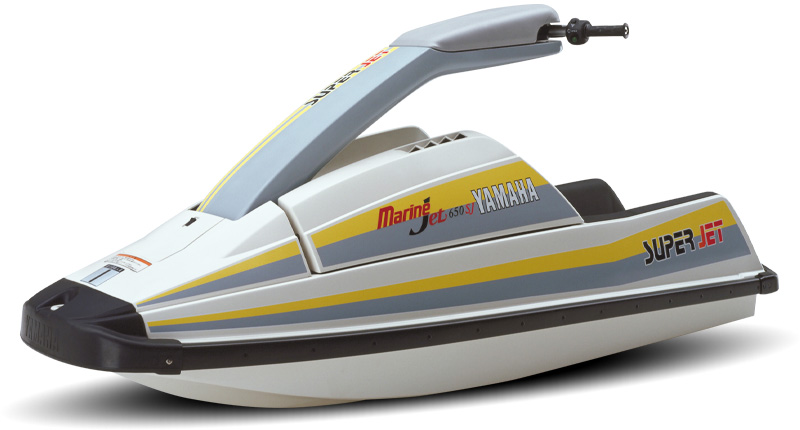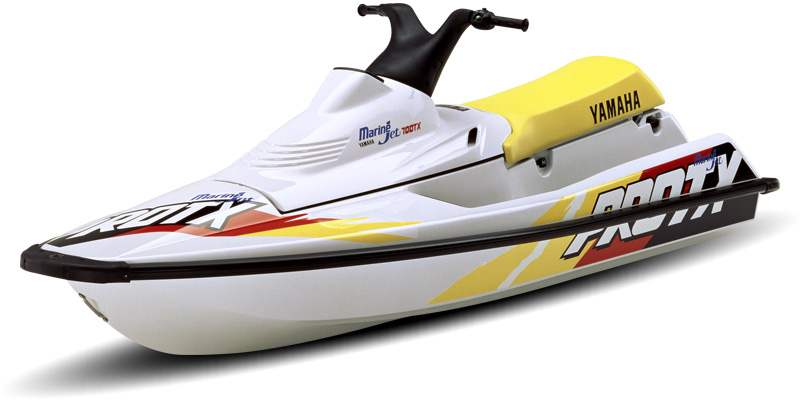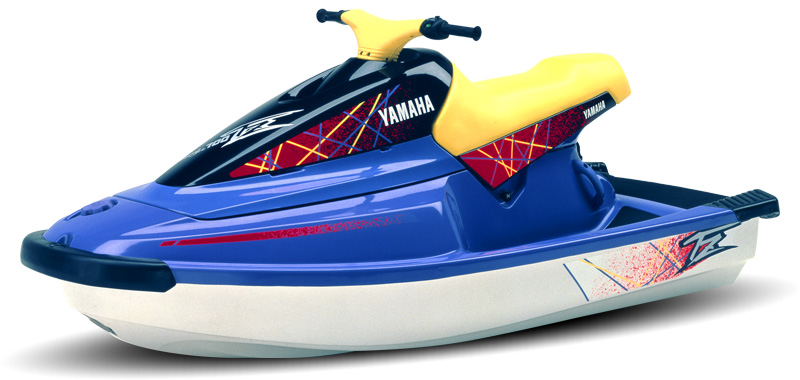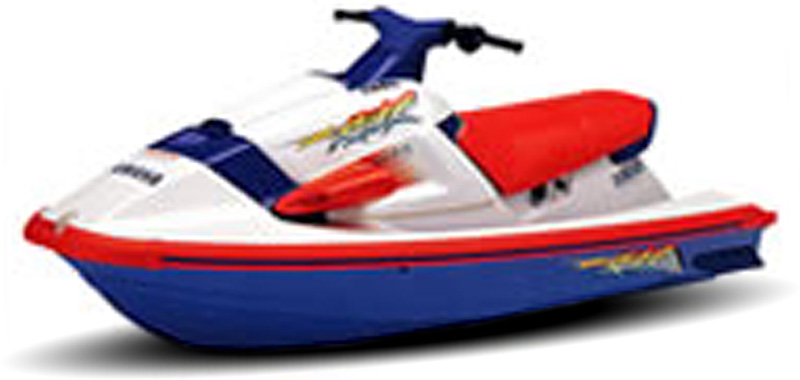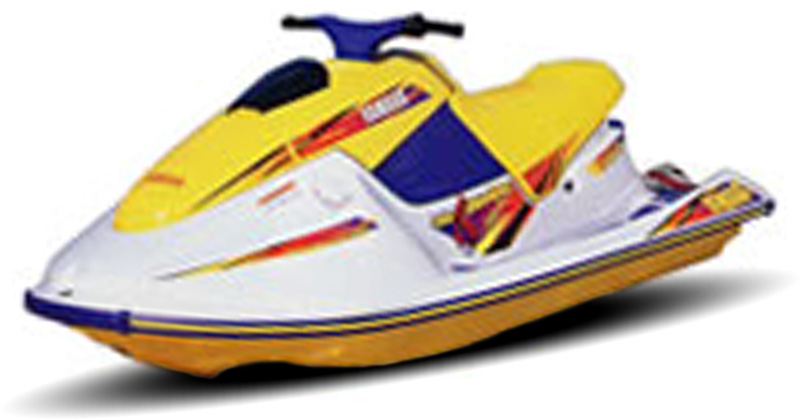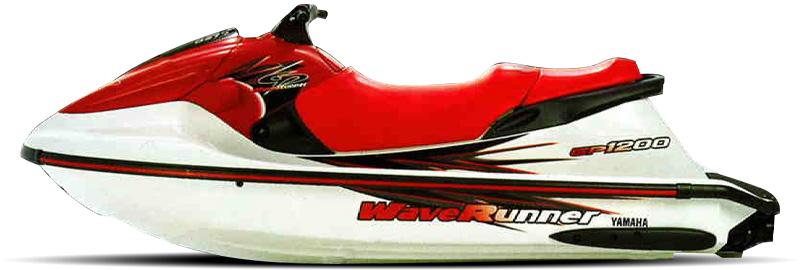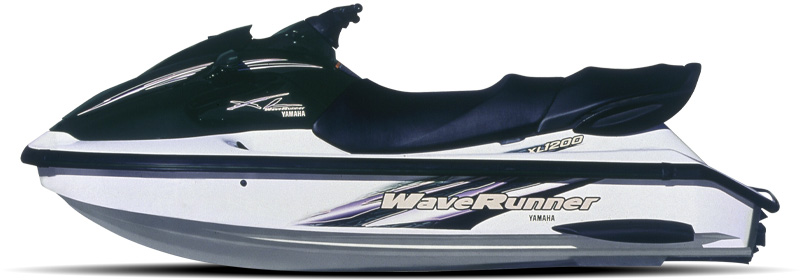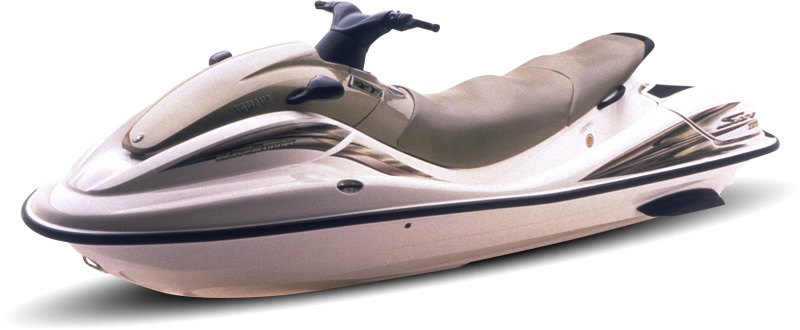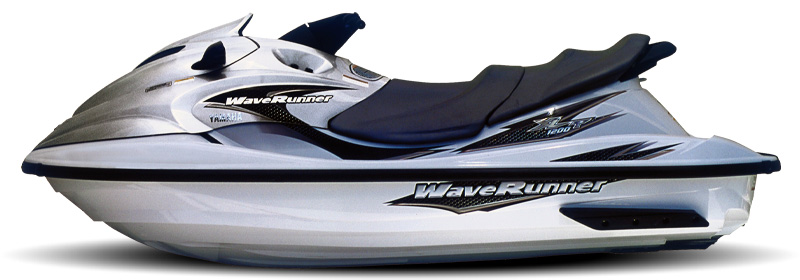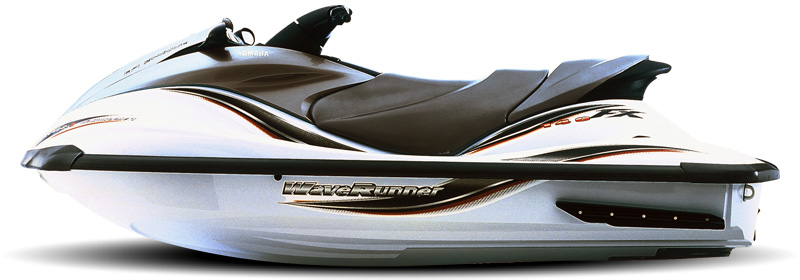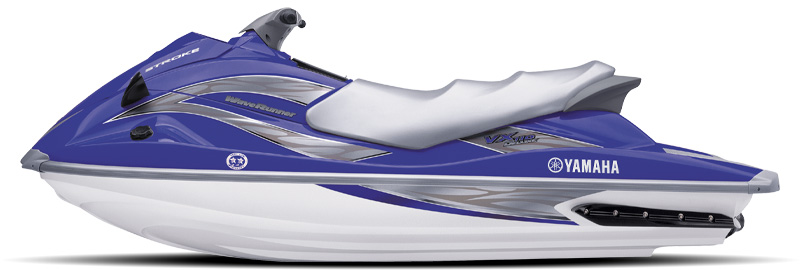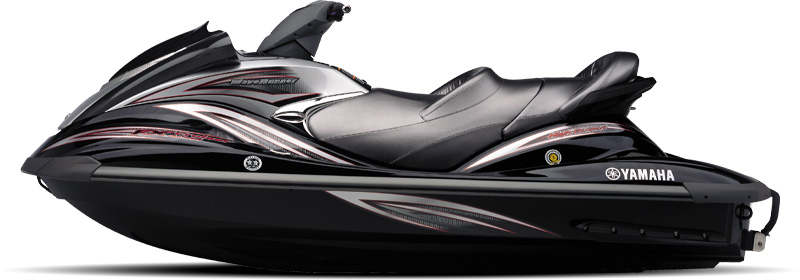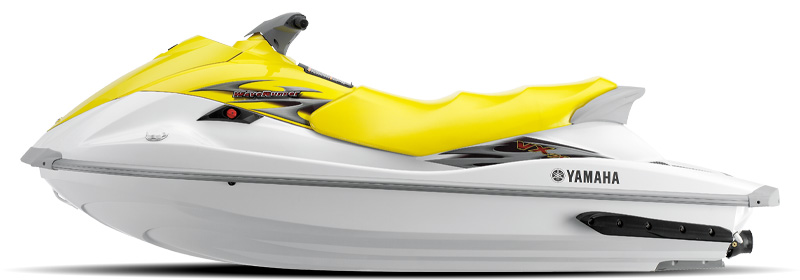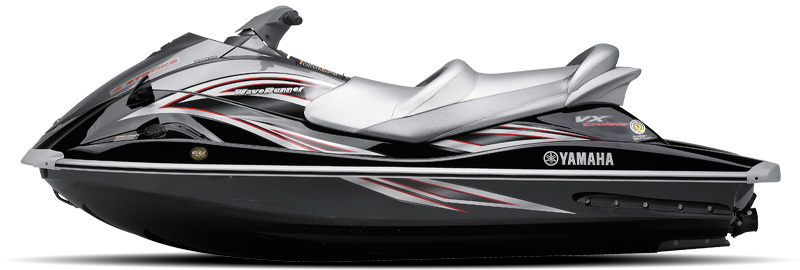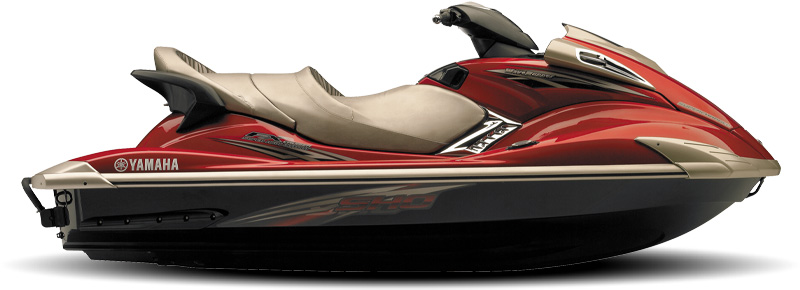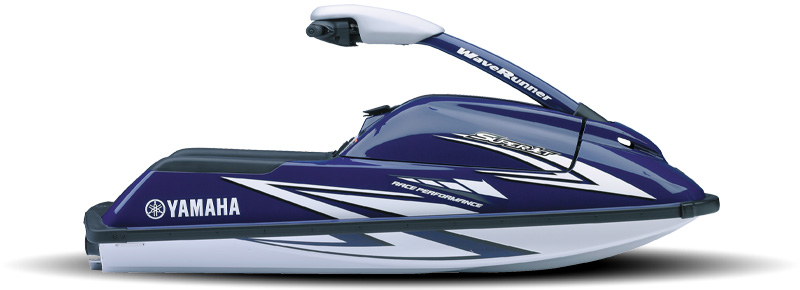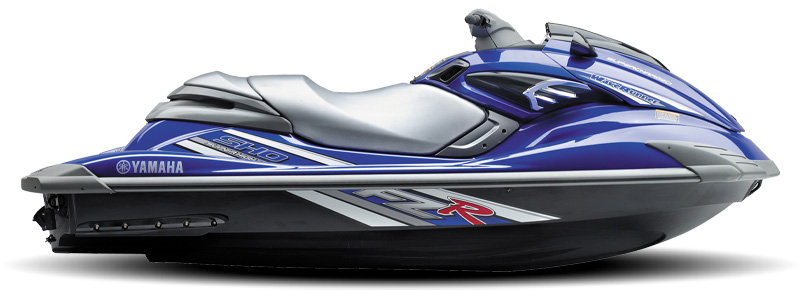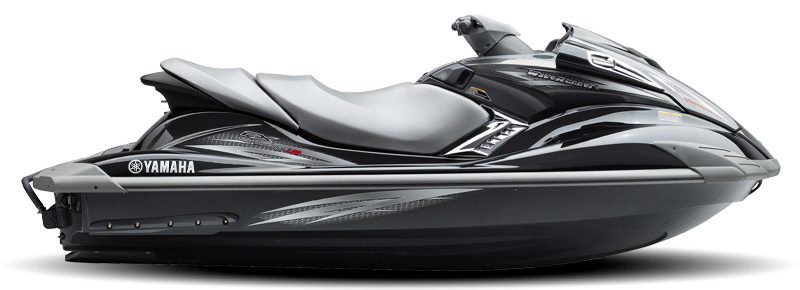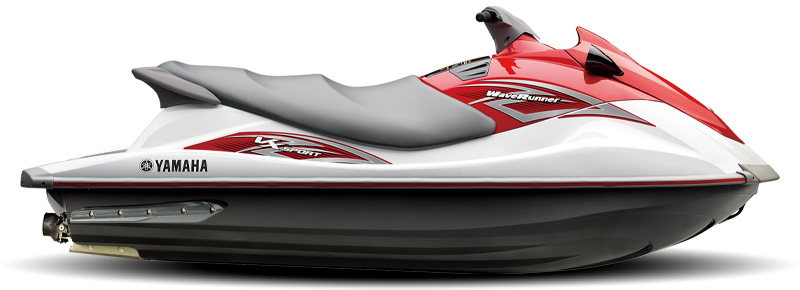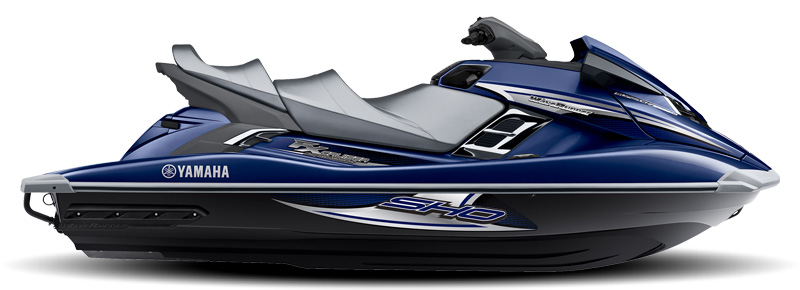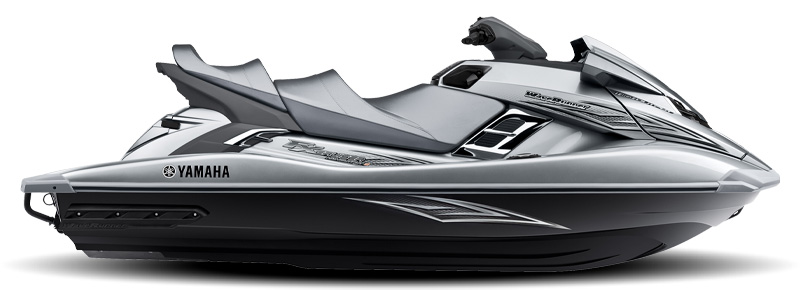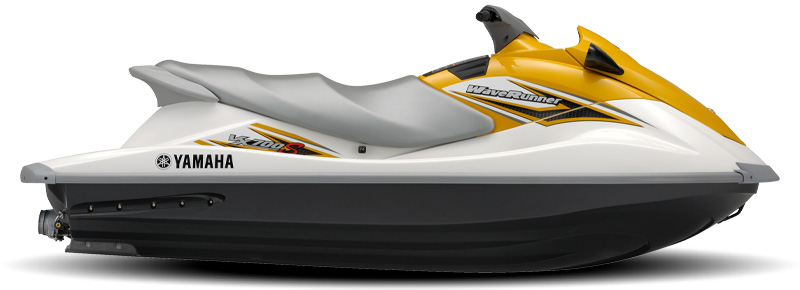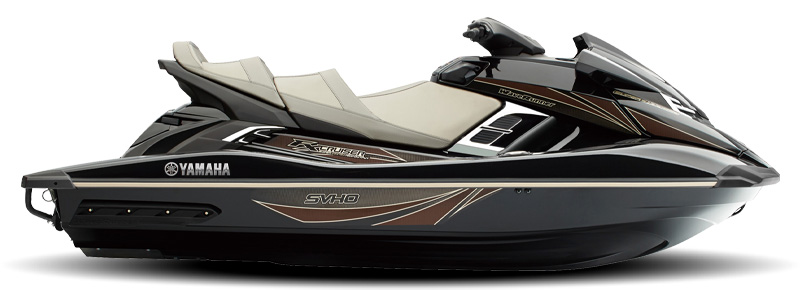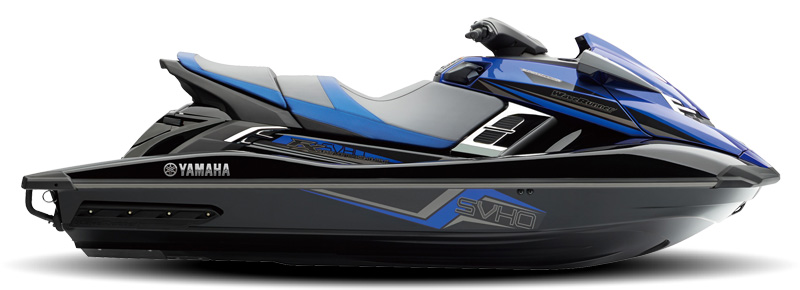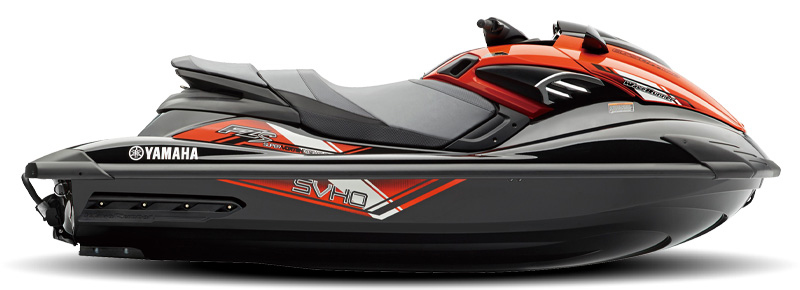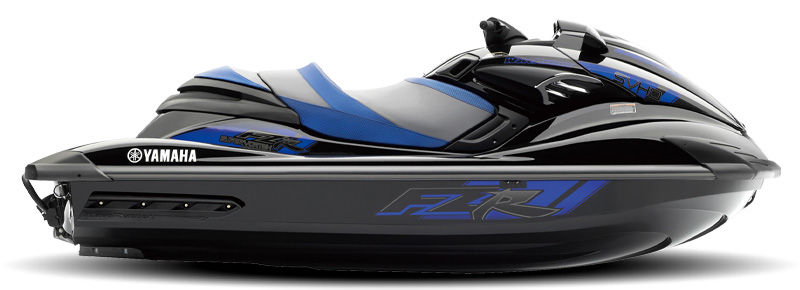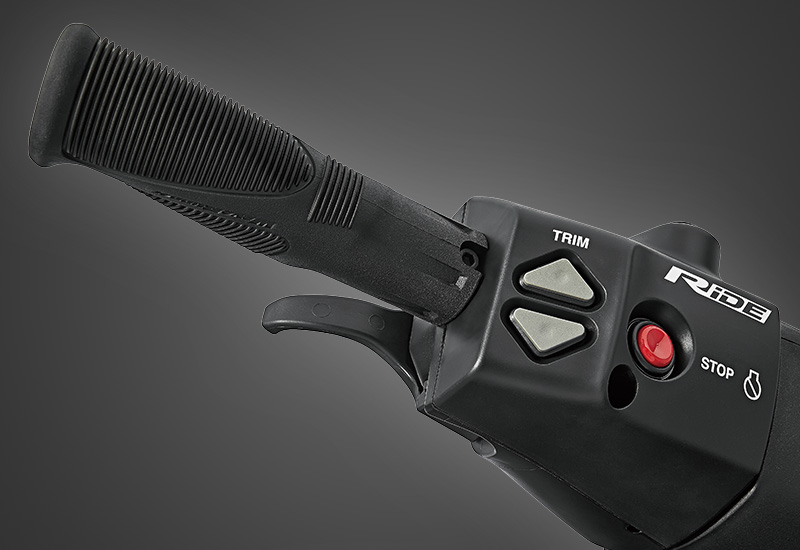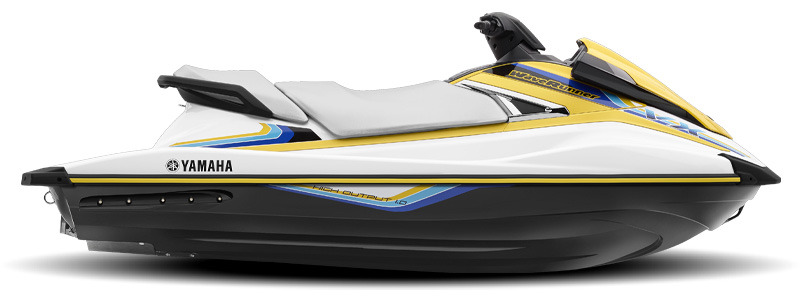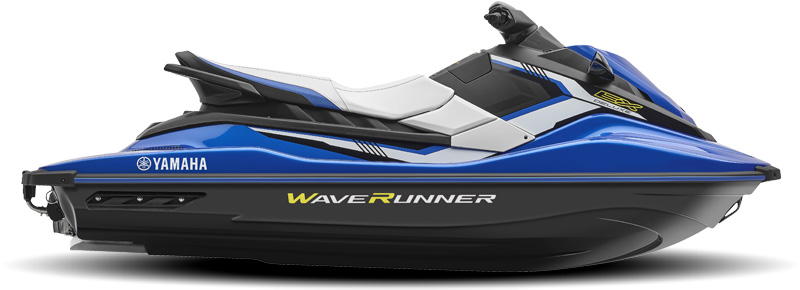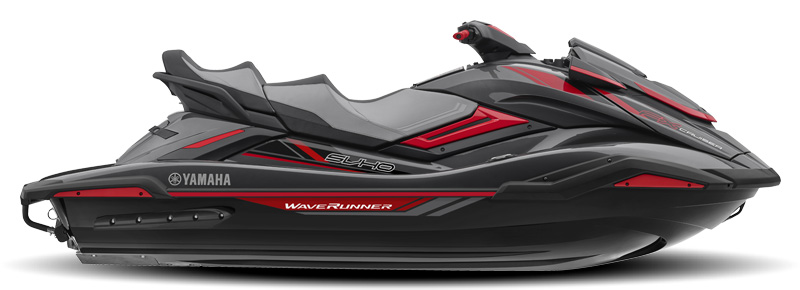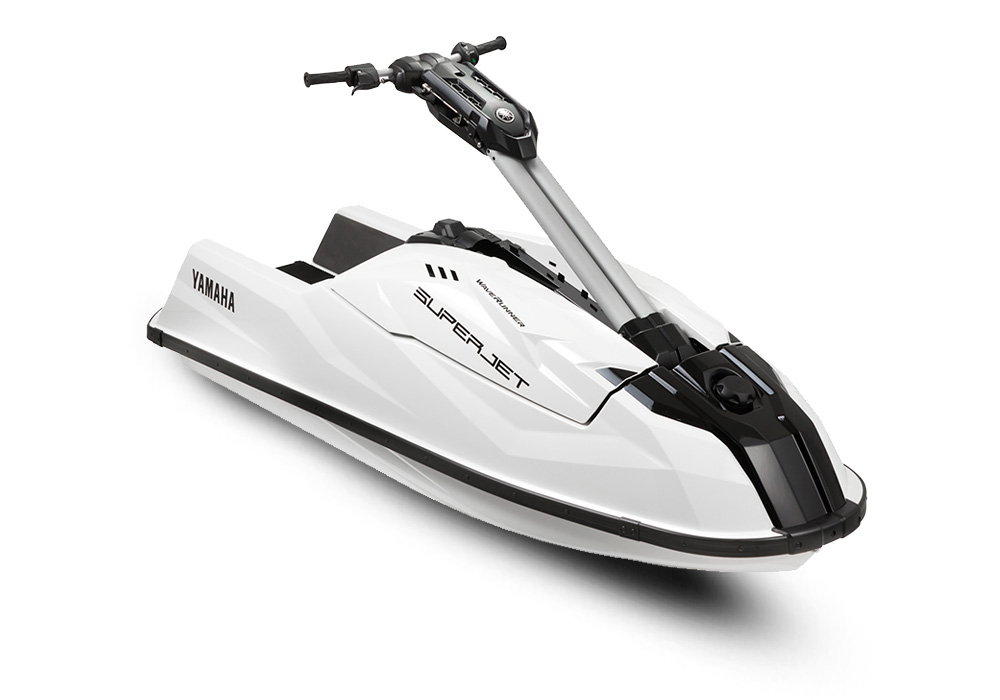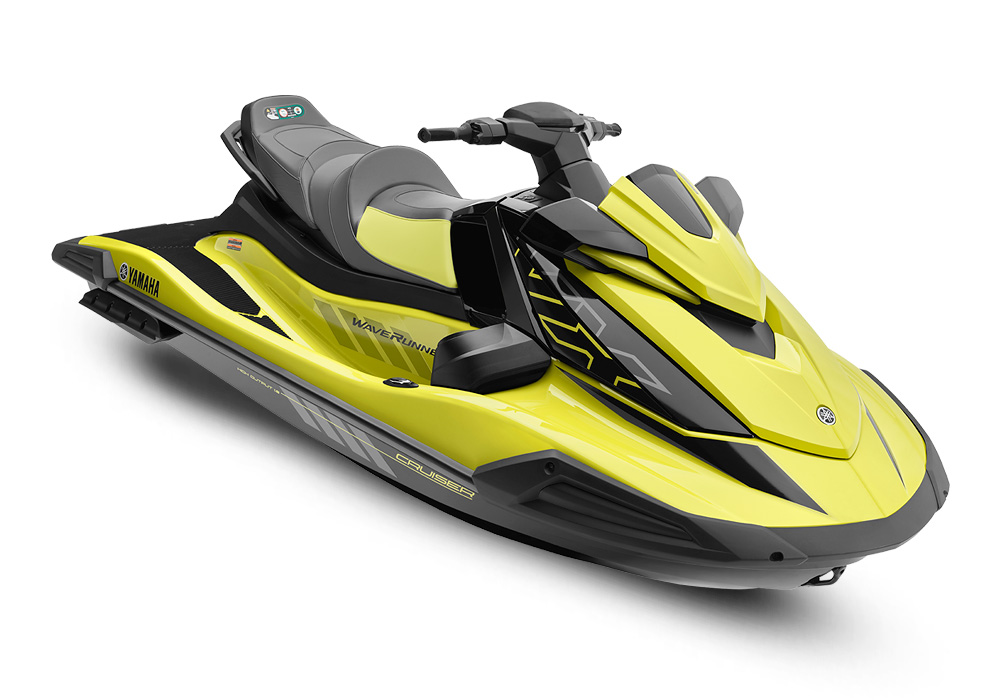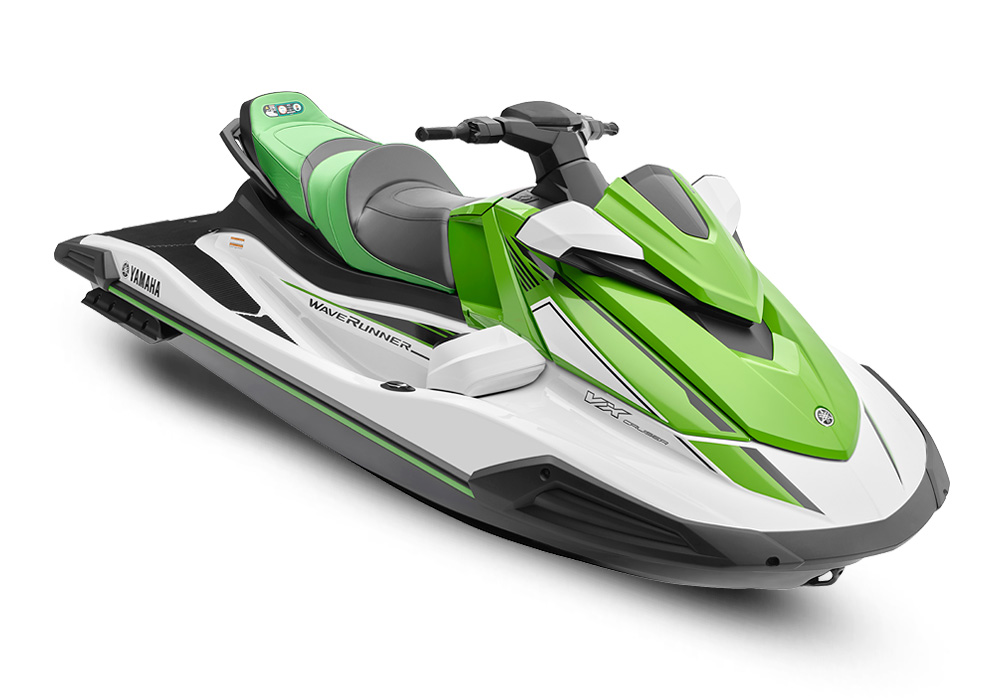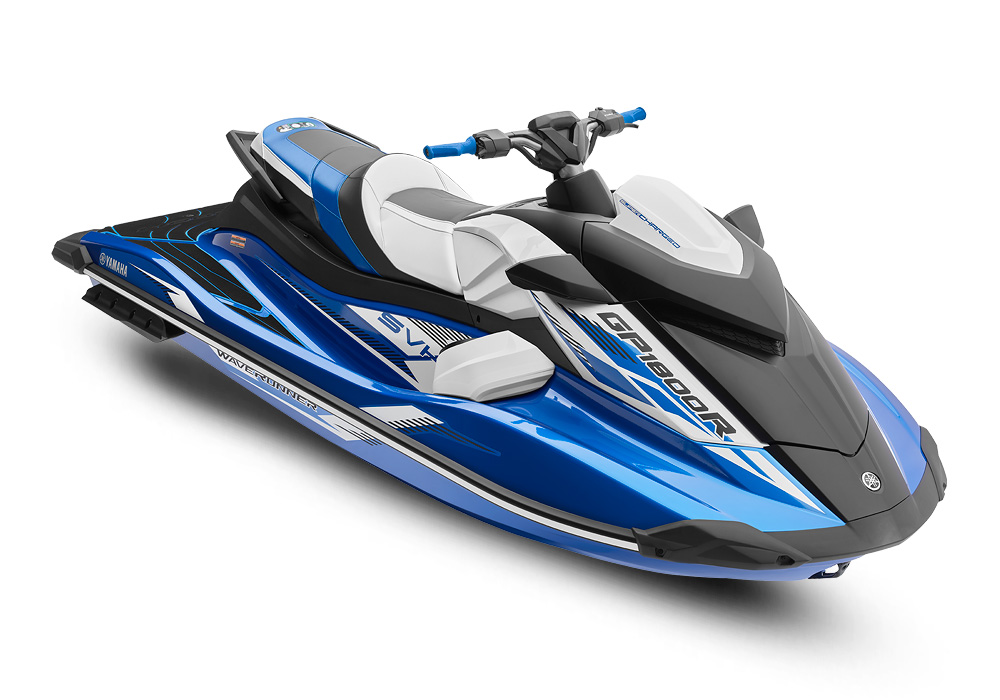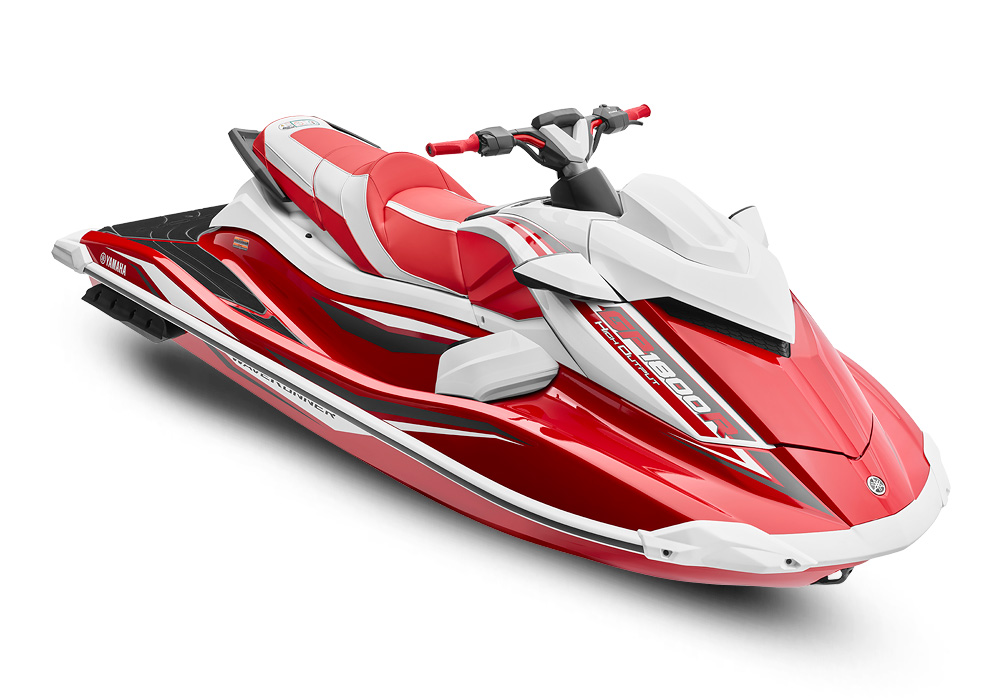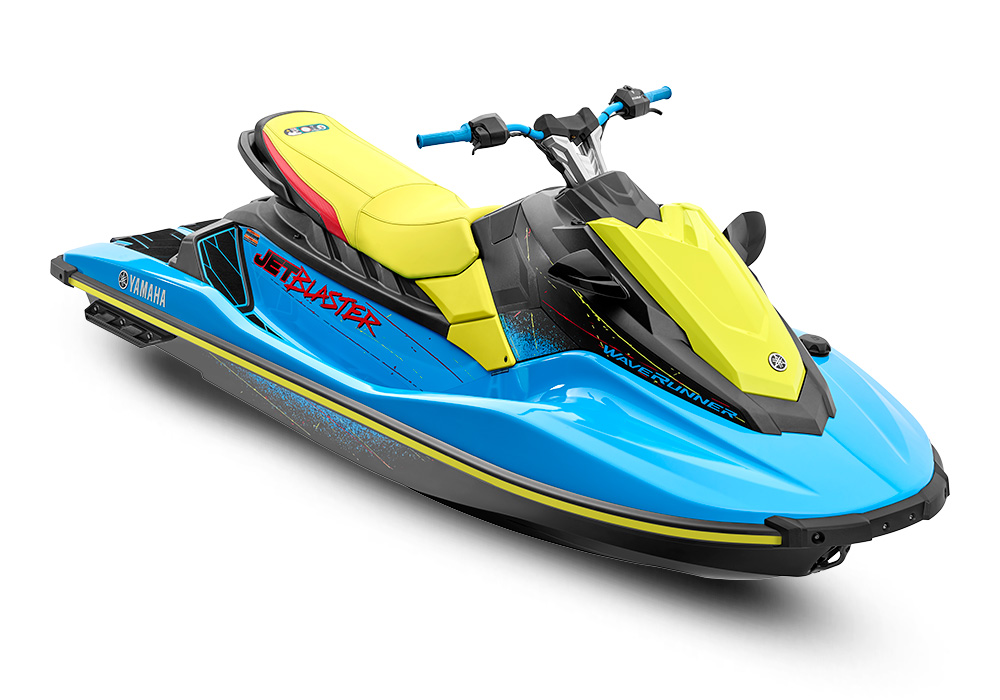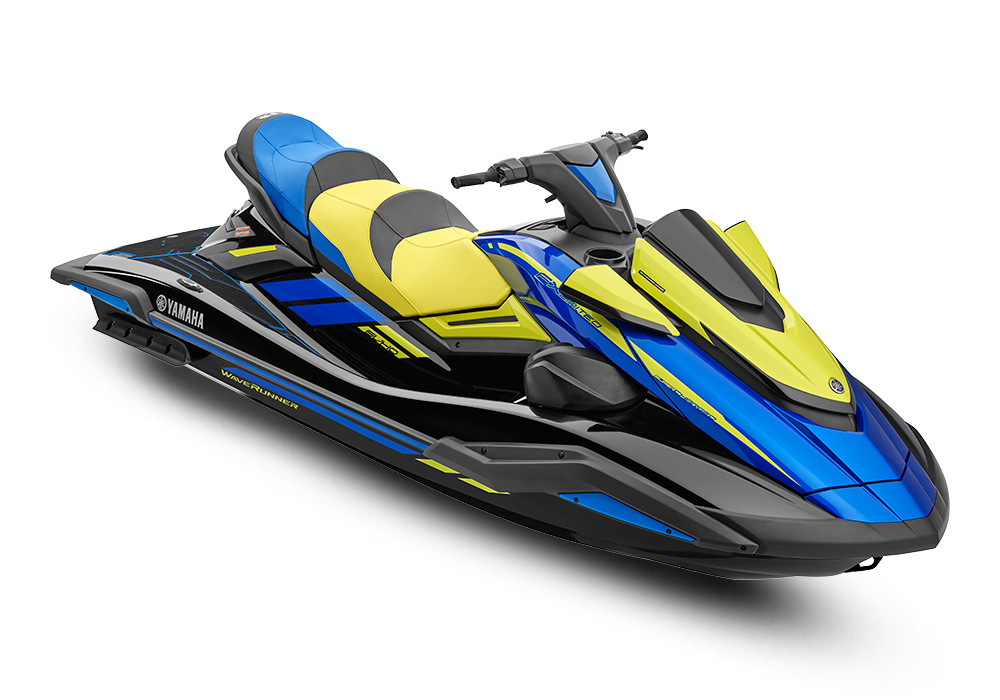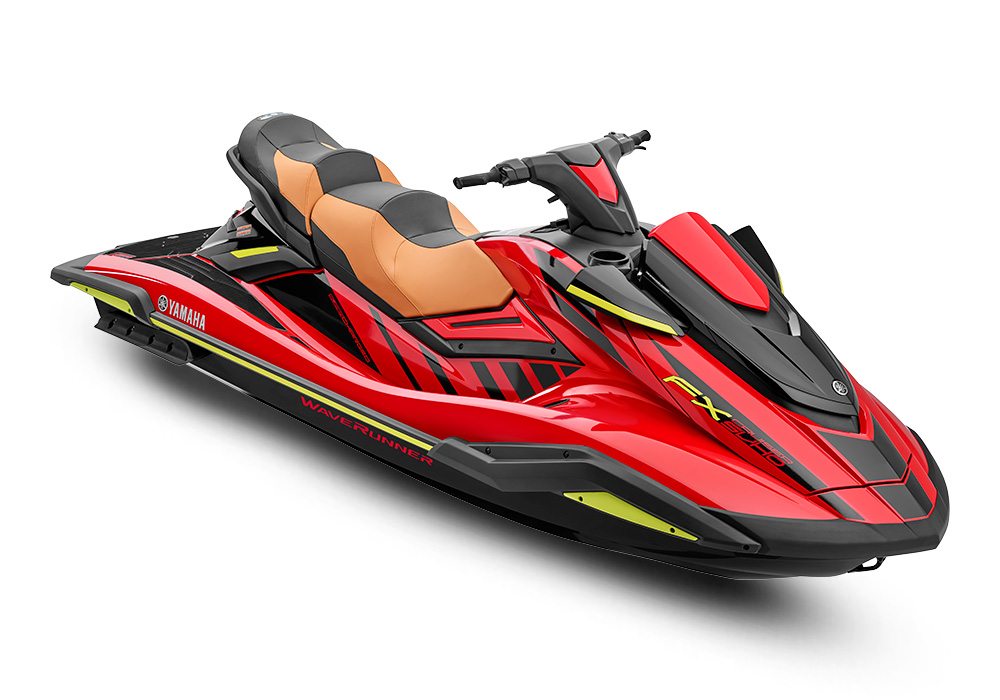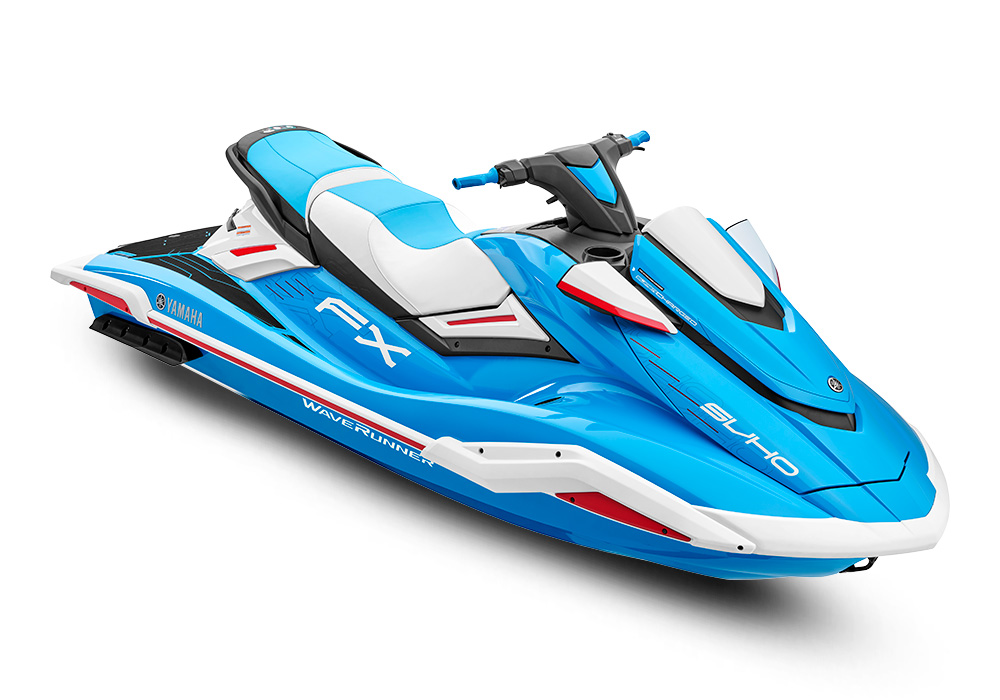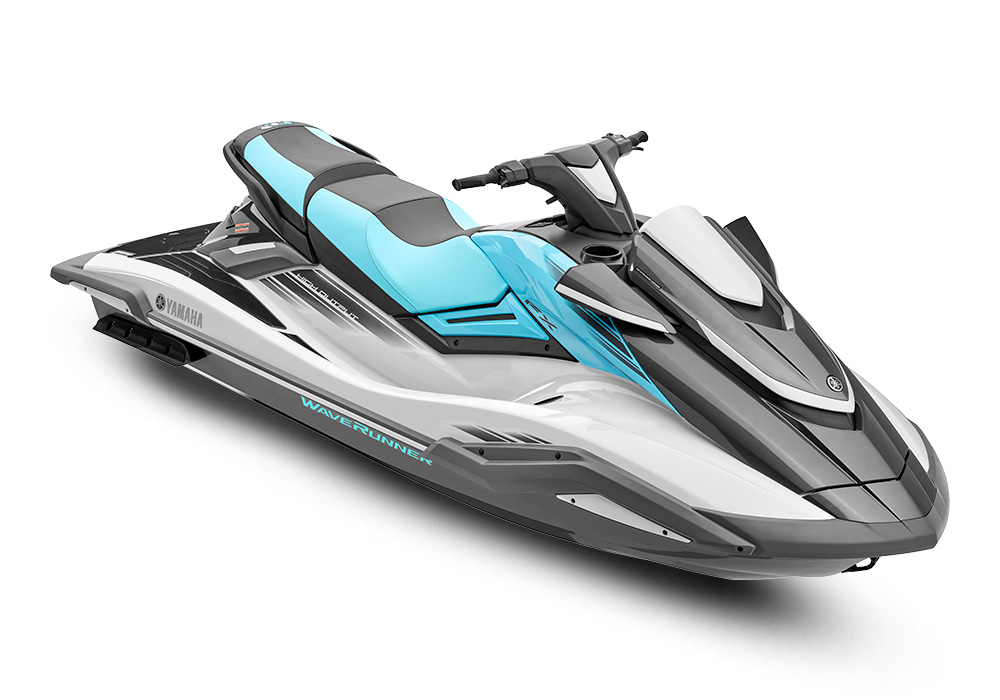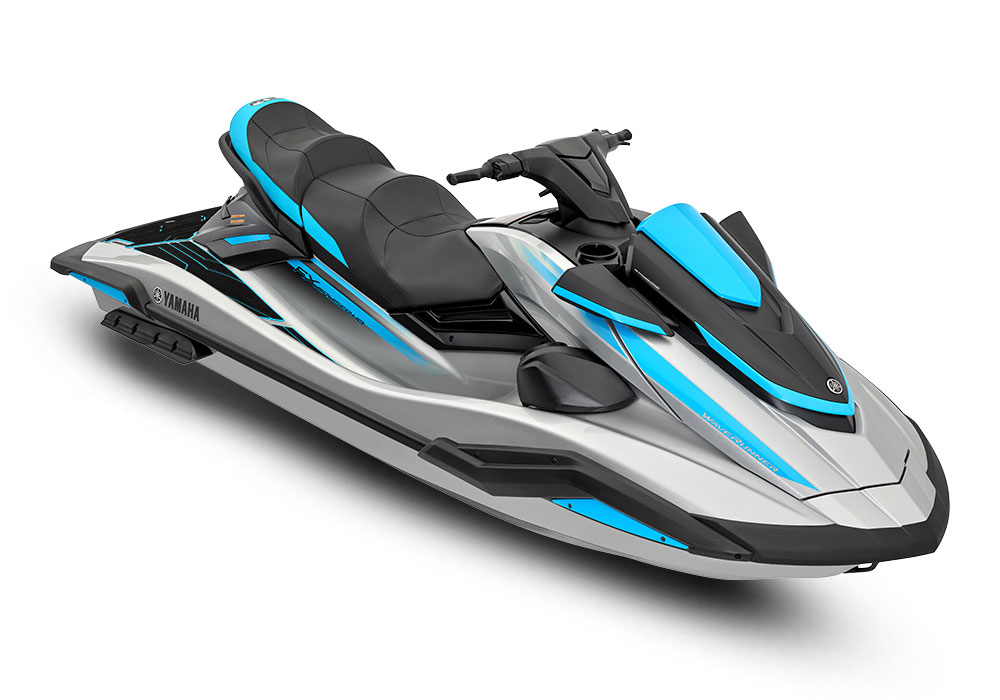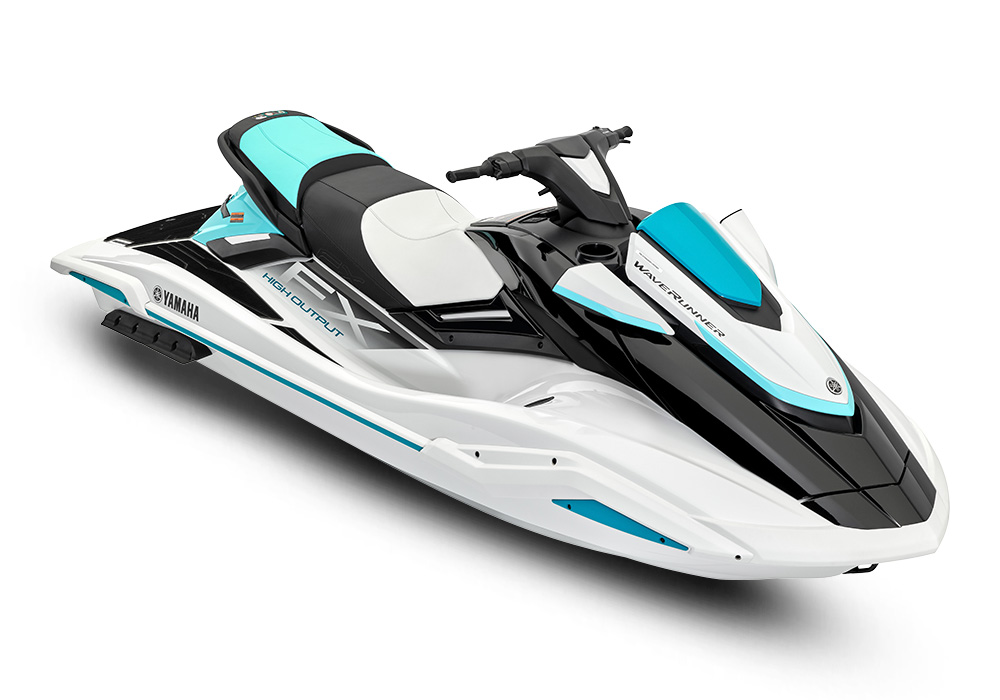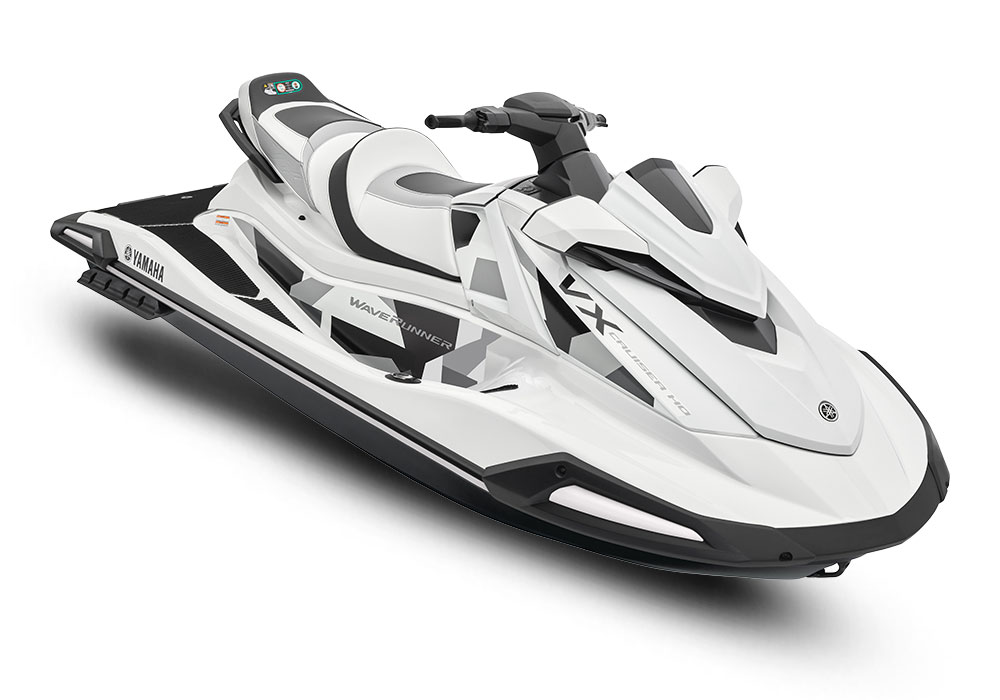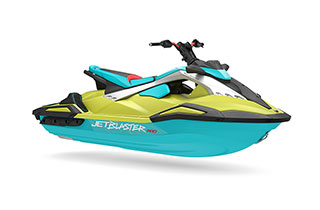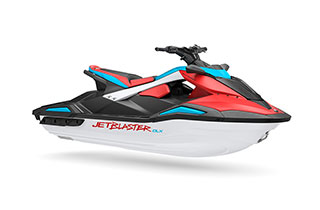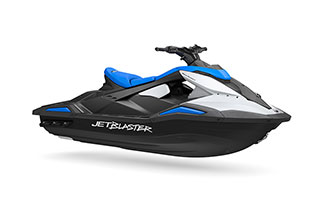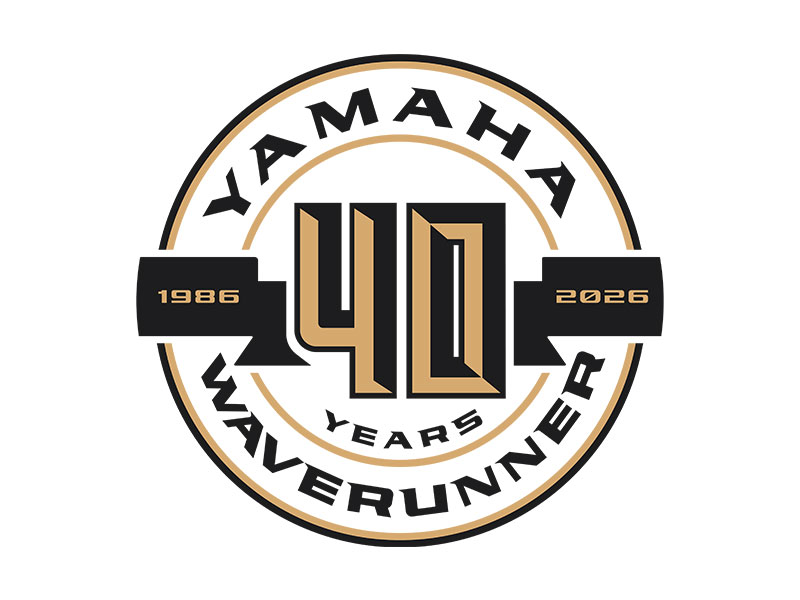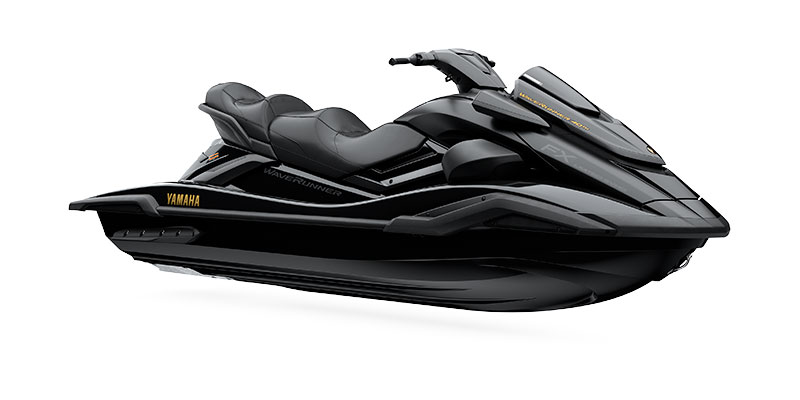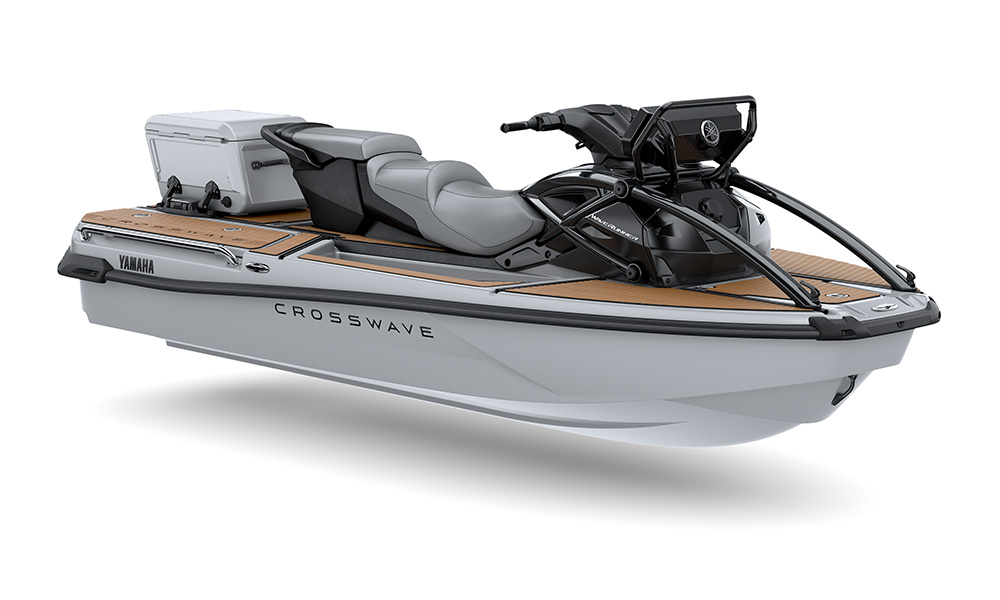History of WaveRunners (PWC)
This page outlines the history of WaveRunner.
WaveRunner marked its 40th anniversary!
Developing the WaveRunner: Staking everything on the future
The WaveRunner 500 (Marine Jet 500T) launched by Yamaha Motor Co., Ltd. in 1986 has come to represent the personal water craft (PWC)class, appreciated by marine fans for the easy control from a sitting position and excellent maneuverability.
The history of the aquatic motorcycle, called the PWC, is relatively long, with a vehicle that could be called the PWC point of origin shown in a French patent magazine some time around 1930. A range of aquatic vehicles were invented in the U.S. between 1954 and 1960, and in 1974 the PWC was launched on the market, but it would be some time before it was thoroughly established as a leisure vehicle.
In the late 1970s a great variety of these kinds of reduced-size small boats and motorized surfboards that had been manufactured overseas began to appear on waters in Japan. And then in 1980 the establishment of the legal framework was set in motion, albeit gradual, with promulgation of the "Special standard for aquatic motorcycles" regulating water craft.
Since then, Yamaha has been at the center of a wide range of industry efforts, supporting development of marine leisure related laws and conducting safety and educational initiatives as part of our role as a manufacturer of all things marine related. Our engineers at Yamaha played a central role in safety-related performance testing for the formulation of this "Special standard for aquatic motorcycles", and it goes without saying that the engineers became captivated by this new craft for roving freely on the water. It was then that they had a vision of designing an original PWC themselves one day. Perhaps it could even be said that this was the moment that the key concept for the WaveRunner (Marine Jet), "a craft offering safe, accessible fun on the water for all" was born.
At the time, the size of the domestic PWC market was only about 100 craft a year, and as a business opportunity it was an unknown quantity. However, the people in charge of the project convinced the company to take a chance on the future of the craft. In 1983 they received permission to develop a PWC, and began the commercialization project.
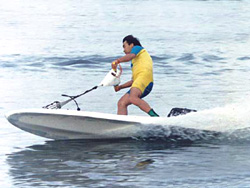
The power ski: A boat-shaped hull fitted with an engine. The key feature was quick turns enabled by ski-like agility.

Testing the tandem model prototype. Both stability and maneuverability were achieved with a shallow V-shaped , double chine hull.
From Power Ski to WaveRunner Development
While Yamaha had been steadily accumulating technological expertise in the areas of boat design and construction since 1960, the conceptual focus for the design of the WaveRunner (Marine Jet) differed to that of existing models. The method adopted for the design and manufacturing process was therefore a repetition of the following steps: prototype creation, trials and verification.
At that time, a variety of models were tested as prototypes, but it was the power ski with its outstandingly high maneuverability, that was selected for presentation in the U.S. This power ski, with its boat shaped hull, was equipped with a 25- horsepower engine manufactured by Yamaha and a 15-horsepower jet pump produced by another company. Because the power ski with its simple handlebar steering control had ski-like agility and had performed favorably in trials carried out on Lake Hamana, those involved had great expectations for it as a new-genre product.
Unfortunately however, the American test rider for the presentation was over 100 kg and 1.8 m tall, and was not even able to get on the board. Even before the performance of the power-ski had been evaluated, a large question mark had already been drawn over the marketability of a power ski designed, as it were, for a Japanese body shape.
Based on this experience, the designers threw themselves into product development with the concept of a totally new craft which could be navigated "more safely, more enjoyably, and was responsive". Development of tandem-seated types progressed having picked up the idea at the U.S. trial-ride. Demonstrated at the 2nd presentation held the following year, these models captured the hearts of the test riders.
The world's first seated tandem type was unveiled at the Chicago Boat, Sports & RV Show in 1986. This was followed by the domestic release of the MJ-500T (WaveRunner) in November of the same year, and a January 1987 unveiling of the single-seater MJ-500S (Wave Jammer), which had the same inimitable maneuverability.
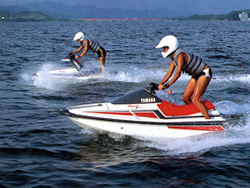
Test-run of MJ-500T (foreground) and MJ-500S (background) The PWC became an overnight marine leisure trend with the event of the WaveRunner (Marine Jet) that made riding fun accessible for all.
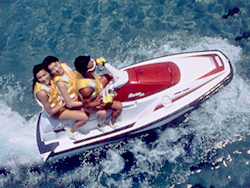
Of the MJ-650 series released
A Craft Offering Accessible Fun on the Water for All
The WaveRunner (Marine Jet), "A craft offering accessible fun on the water for all" was a conceptual departure from existing PWCs, and one that was well received by marine fans, both in Japan and also on the world stage. The features of the MJ-500T – ease of control from a seated position and high maneuverability that enabled tandem riding – were features that were practically synonymous with the WaveRunner (Marine Jet) of the time.
The MJ-650 series that followed was developed based on these two MJ-500 models, but of this series it was the world's first three-seater model, the MJ-650TL, that gained the most popularity. This model was designed to enable three people to experience the same level of performance as a solo rider, with no loss of control characteristics, maneuverability, or exhilaration. The design concept – "A water vehicle offering light-hearted fun on the water for everyone" – provided the impetus to design the large-sized WaveRunner (Marine Jet) that captured the imagination of WaveRunner (Marine Jet) fans.
It was around this time that the WaveRunner (Marine Jet) users began to form two distinct groups: the leisure users and those with a taste for racing. The model base as we know it took shape at this point, with a line-up of performance models, such as TZ and GP aimed at the racing group, and luxury models such as the VN and XL for those who wanted to get the most out of their leisure hours.
The size of the market has increased hand-in-hand with the enrichment of the domestic market lineup, and Yamaha have come up with a variety of initiatives to increase public awareness about Marine Jets and the different ways of enjoying the water. These include the establishment of the "Marine Jet Club" for Marine Jet owners and the "Marine Jet Jamboree" events held for their benefit, and active involvement in safety education activities through the establishment of the PWC Safety Association.
An important turning point in the up-sizing of the Marine Jet was the shift from a 2-stroke to a 4-stroke engine from 1995. In May 2002 Yamaha launched the world's first low-emission PWC featuring a 4-stroke engine: the FX-140. The FX-140 was followed by 4-stroke updates of not only the WaveRunner (Marine Jet), but also the entire PWC range; 5 years later, in 2009, domestic runabout models all featured 4-stroke engines.
Almost a quarter of a century on from the first prototype, the WaveRunner (Marine Jet) has come to represent PWC craft. The potential for fun and enjoyment can only increase as the WaveRunner develops in new directions, building on the concept of "A craft offering accessible fun on the water for all"
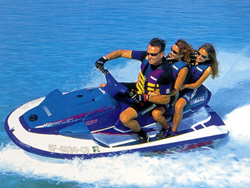
The GP1200 proved overwhelmingly popular as a runabout model that crossed over the racing and leisure genres. The updated GP1200R and GP1300R models have been refreshed with new technology such as Y.P.P.S. and Y.S.S.S. designed to reduce the environmental impact.
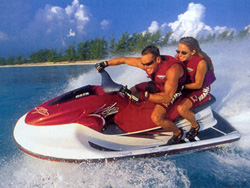
With the release of the MJ-1100VN, the three-seater model in 1996, a great advance was made in the up-sizing of the WaveRunner (Marine Jet)
